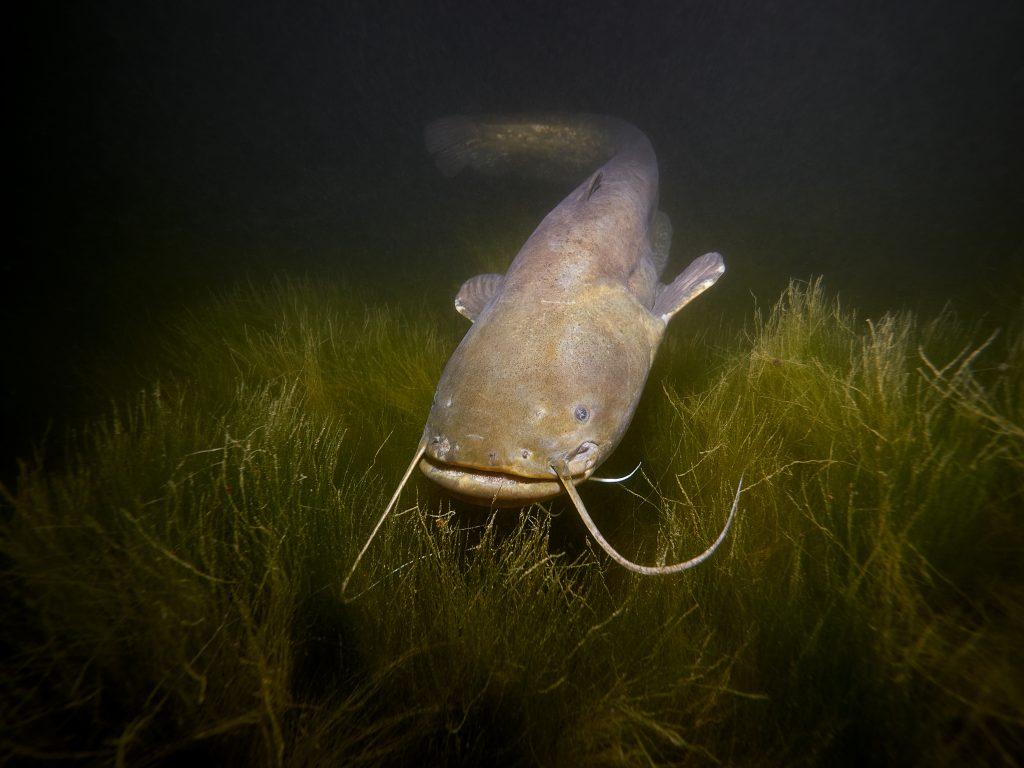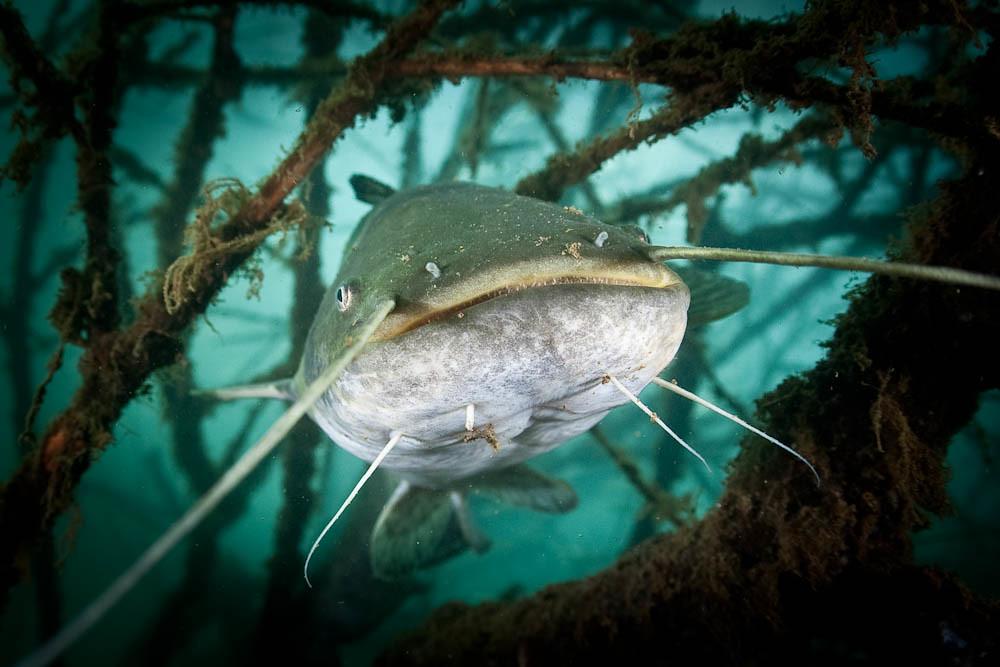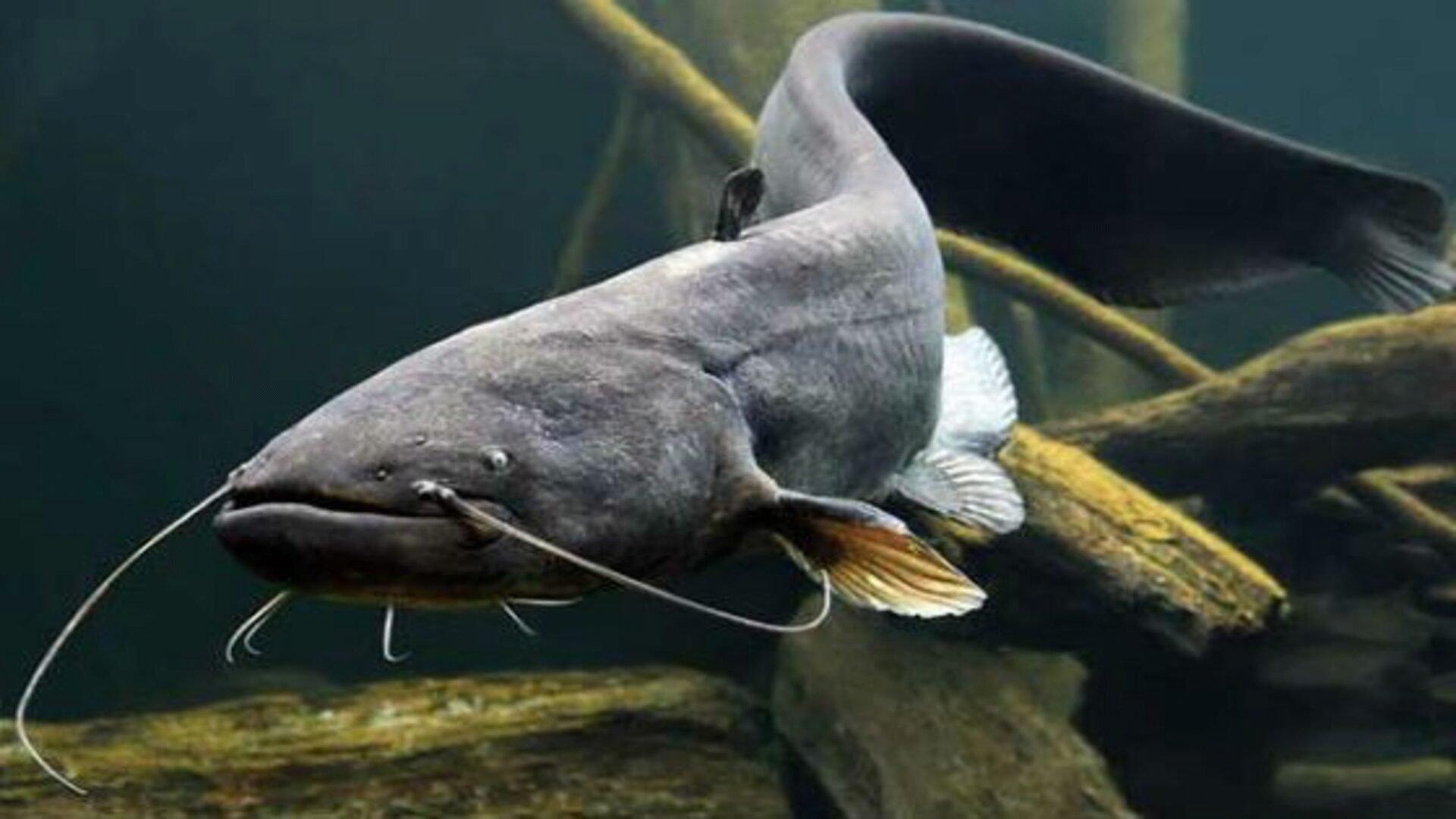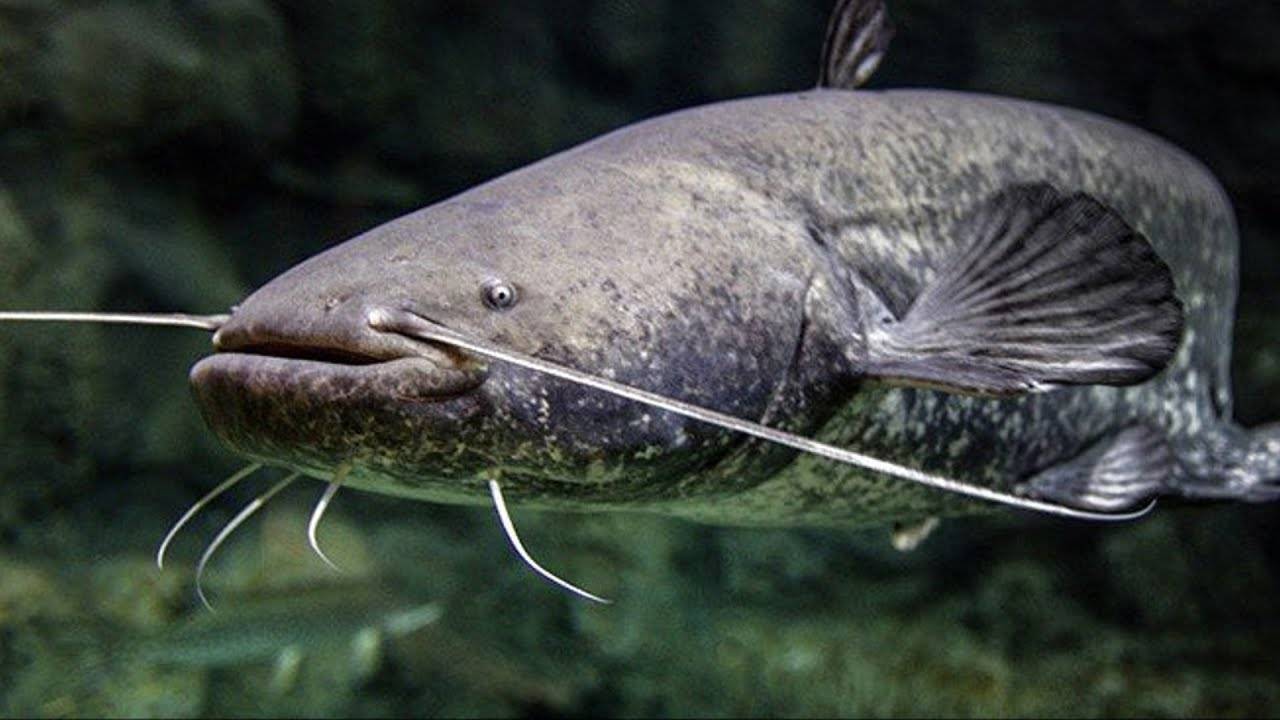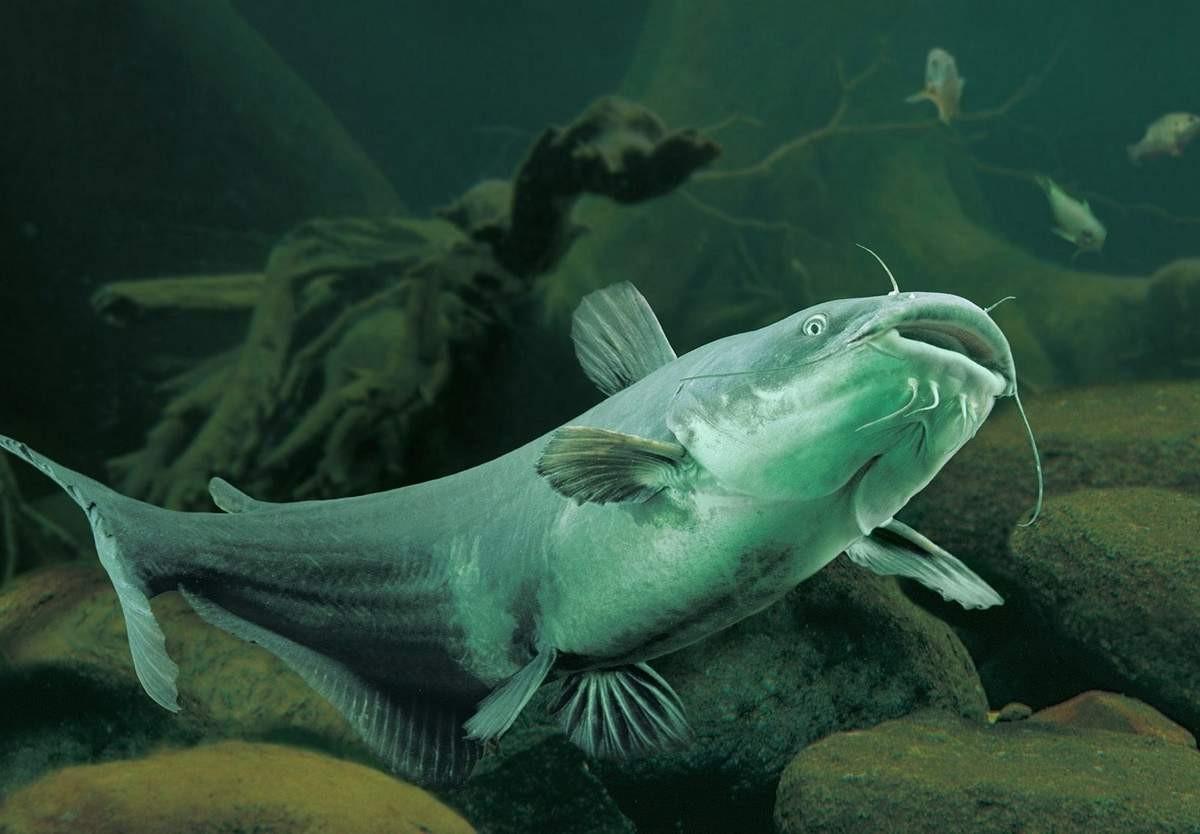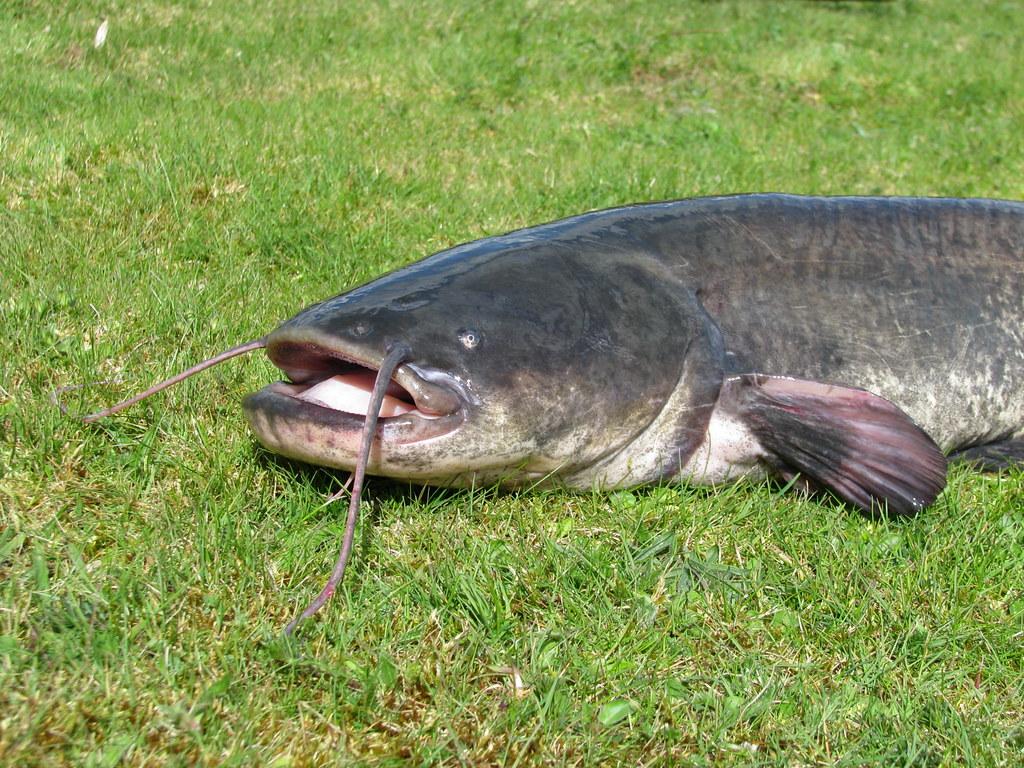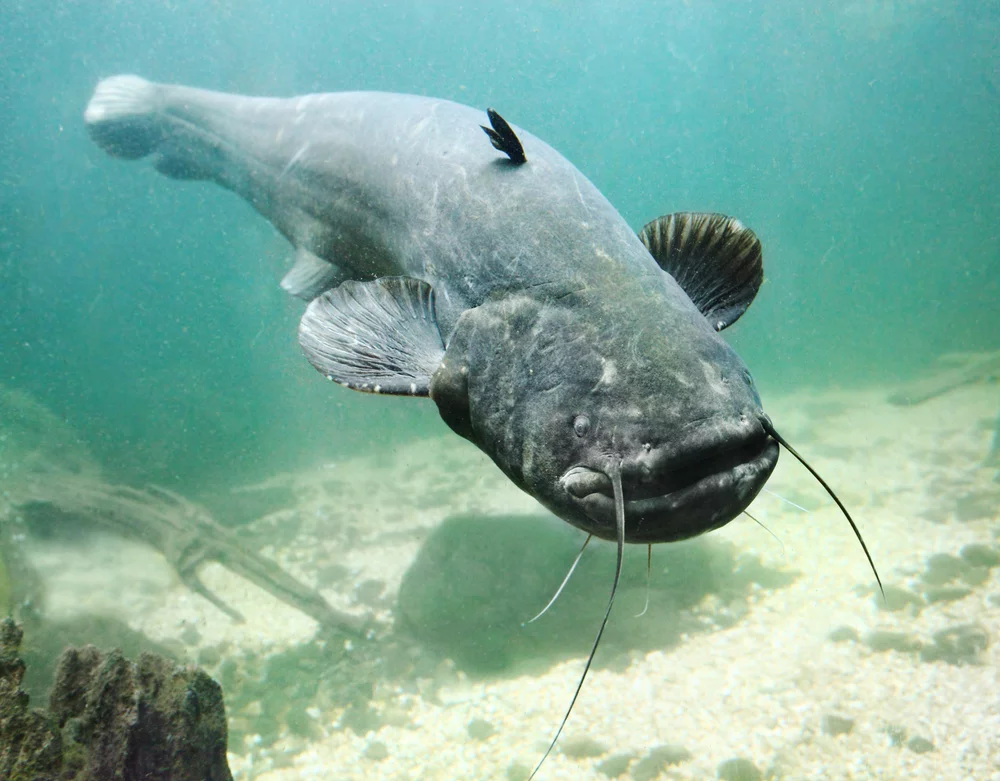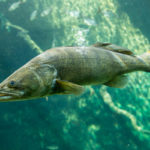Catfish are known and loved for many reasons, the main one being their distinctive appearance; It’s true that you definitely can’t call him ordinary. Also, most species of this fish are easy to keep. Catfish fillets are often used in cooking. This species is also valuable for fishing due to its weight. Catfish attract the attention of fishermen due to their size, strength and the potential to become a valuable trophy.
- Description
- Appearance
- Dimensions
- Origin of fish
- Features of body structure
- Life cycle features
- Lifestyle
- Distribution area
- What does catfish eat?
- Enemies of catfish
- Reproduction
- Kinds
- Common catfish (European species)
- American catfish (dwarf species)
- Electric catfish
- Fat-tailed catfish
- Speckled catfish
- Flathead catfish
- Glass catfish
- Antenna catfish
- Features of catfish meat
Description
The catfish family consists of hundreds of species that vary in size, shape and color. All of these creatures are found in freshwater environments. Most of them are hunters, and some eat both plants and animals. In addition, many species are active at night.
Appearance
Catfish are easily identified by the presence of either one or two pairs of antennae on the lower jaw. They have a dull brown body, sometimes with shades of gray or green, and a white belly. In addition, they are characterized by the presence of an unusually wide head, which is flattened and devoid of scales. In addition, many species have an adipose fin on their back, with which they move along the bottom of freshwater bodies, making wave-like movements. Their eyes are also located far apart.
Dimensions
Body size and weight can vary significantly depending on the species and environmental conditions. As a rule, they have a length of about 20 cm. Unfortunately, due to the harsh environmental climate, their bodies rarely reach their maximum size. Catfish that feed on aquatic animals are larger than other predators in the same area.
Fun fact: one of the most popular species is the common catfish - it stretches up to 3 meters in length and is considered a valuable catch for fishermen everywhere. On the other hand, there are also small varieties, such as chabrosus, pygmy or passerine catfish from the genus Coridoras, which do not even reach 3 centimeters!
Origin of fish
They are some of the oldest fish in existence, which has influenced the way they look, reproduce and behave. For example, some species of these river inhabitants have a pineal opening for the epiphysis; spiked growths on the fins and head; teeth on the body like real sharks.Three fossil families (Andinihthyidae, Bachmaniidae, Hypsidoridae) are included in the genus Catfish.
Features of body structure
The physical characteristics of catfish vary greatly depending on the family and genus to which they belong. Male and female fish show only subtle differences in size, with females being slightly larger. The majority of species are modest in size, but some species can reach several meters in length, such as the common catfish, which weighs up to 400 kg. The physique is similar to that of the burbot, but its head is flatter and much wider.
This species is easily distinguished by the absence of a posterior adipose fin and a long, flattened tail that makes up half of the body. Other distinguishing features include wide-set eyes located close to the upper lip, a protruding lower jaw with countless small teeth. There are no spines on the fins, and the anal fin smoothly merges into the caudal fin. It is important to note that this type of fish is similar in body characteristics to Soldatov’s catfish, which causes confusion among inexperienced fishermen.
Life cycle features
Catfish, as a rule, lead a solitary, immobile lifestyle. They rarely move away from their homes and settle in deep and cluttered places, for example, under snags, banks, tree roots or in pools near dams. These fish can stay in the same place for many years and leave it only in winter to move up the river and spawn in floodplains or floodplain lakes.
The process from waking up from hibernation to spawning takes about a month, during which they feed very frequently.After spawning is complete, catfish migrate back to their original habitats, where they remain throughout the summer before hibernating again for the winter.
Before the cold weather arrives, members of the group become active and go out to hunt more often. Large individuals already in September begin to look for a convenient place for the upcoming winter. By October or mid-November they stop hunting completely. Catfish seek refuge in burrows and, as a rule, gather in groups of five to ten individuals. They try to burrow into the mud for protection from the cold.
Large species can live up to 55 or 63 years, although due to environmental degradation their life expectancy is reduced. Small catfish often do not live to be 10 years old, and this period varies depending on the specific species. For example, golden corydoras will live from 5 to 10 years, while dwarf representatives have a life expectancy of only three years.
Lifestyle
Almost all species of catfish are predators that are active at night and hide in burrows or under tree roots during the day. Adults of this species tend to be territorial, and territorial disputes may occur between conspecifics; however, juveniles often live together in groups.
During the breeding and wintering periods, the aggression of adult fish noticeably decreases. Unlike the common catfish, small species tend to form larger schools and show much less aggression towards each other. How many “members” there will be in their flock depends on the species and habitat.
An interesting trait found in some species - such as Corydoras goldenis - is that they have an ability known as gut respiration, which allows them to breathe out of water.
Distribution area
It is possible to meet catfish in any part of the world, except for the polar regions. There are 10 species of catfish living in Russia, such as the common or European catfish, which is found in abundance in Europe and prefers warm climates. It lives in rivers such as the Volga and Don. And also in the Caspian, Azov, Black and Aral seas.
The Amur catfish is popular in Japan, China and Korea, but it mainly lives in the Amur River basin, some individuals are found in Lake Khanka and Lake Baikal. Soldatov's catfish is similar to its predecessor, but, in addition to the Amur basin, it also lives in Lake Khanka and the Ussuri River.
Catfish live in freshwater environments, although there is an exception in the form of channel catfish, which survive in salt water. They often live near the bottom of these bodies of water and prefer mud or sand as a habitat. When they find themselves in shallow water, it causes them stress and they will try to hide from the light among plants, rocks or debris.
What does catfish eat?
Catfish, which can be quite large in size, cannot pursue their prey, so they lie in ambush for other fish. Their body coloring allows them to blend in with the bottom and vegetation of the pond. Adults mainly feed on crustaceans, gaping waterfowl, mice and rats. They do not disdain frogs, fish and large insects, while young catfish feast on leeches, mosquito larvae, toad tadpoles and small bugs.
Enemies of catfish
The danger to the colony is posed by humans: every fisherman wants to catch a takub fish. However, young catfish are often negatively affected as they tend to quickly swallow the bait.At times, hunters even dive into the water with scuba gear with the intention of catching the strongest specimens.
In addition, people significantly harm catfish by polluting waterways. After all, fry and eggs of large fish are a desirable delicacy for any predatory fish, for example, for pike, which often feed on them. Adults may not be afraid of other birds and aquatic predators.
Reproduction
Catfish breed during the hot months, with some species mating in the spring and others in the summer. During this period, they swim to places where they can remain hidden, for example, in lakes with an abundance of plants and water, sheltered from direct sunlight.
During courtship, male European catfish will chase potential mates and make a loud noise by slapping their massive caudal fins on the surface of the water. They will also use their heads to try to separate the female from other males vying for her attention.
Kinds
There are 3,801 species of catfish. Species that live in aquariums are quite small, brightly colored and have a distinct body type. They are not too demanding of living conditions and rarely show aggression. The size of these fish can vary from 35 cm to 5 m (although this is not common, especially in Russia).
Common catfish (European species)
The length of this species never exceeds 2.9 meters, and the weight of individuals does not exceed 52 kg; however, some can reach a weight of 390 kg.The color of this catfish is a protective brown with a hint of green, the undersides being very pale compared to the main shade. Albino specimens are also occasionally found. In addition, pigmentation varies depending on habitat.
It is interesting to note that large species such as the common catfish are known to be aggressive towards people, especially children.
American catfish (dwarf species)
This species is native to North America but has been introduced to Europe and the fish can be seen in western Russia. Enthusiasts love to breed American catfish because the latter are able to survive in captivity even in not very clean water. It can sometimes grow up to 1 meter in length, although it will usually be much smaller, with a maximum weight of 300 grams. The coloration of this fish is brown or black with a darker back and a lighter belly area.
Electric catfish
This original species exists only in African waters. It grows up to 1.19 meters in length and is brown in color, occasionally with dark markings of varying sizes on the side of the body and back. It is considered one of the most dangerous inhabitants of water bodies due to its powerful electric shock, which it uses both for defense and for hunting purposes.
Fat-tailed catfish
There are about 30 varieties of it, all of them originating from Asia. Many of these mackerel catfish are suitable for keeping in aquariums. As a rule, their body length does not exceed 15-17 cm. In addition, some breeds have poisonous spines.
Speckled catfish
Speckled catfish is an aquarium fish that belongs to the genus Coridoras. Originating from South America and known for its adaptability in captivity, the average lifespan is 6-8 years.The coloration is light brown with indistinct dark spots, and, like all predators, it has a strong metallic sheen.
Flathead catfish
Individuals belonging to this family live in South America. They are known for their bright hue and long antennae. Despite this, people rarely keep them at home as pet fish. The catfish reaches a length of 1.2 meters and is distinguished by the ability to make noise, the function of which remains unclear, although it is believed to be a method of scaring away predators.
Glass catfish
This species is kept in aquariums. Glass catfish, when kept in captivity, grow no more than 10 cm. The body is colorless and emits luminescence under certain lighting conditions. It is very sensitive to light, making it difficult to spot fish during the day. In addition, breeding this species at home is impossible.
Antenna catfish
This family includes hundreds of species, some of which are very tiny, while others can reach a length of one meter. Aquarists value antenna catfish because of their bright colors and constant movement. Zebra microglanis, pimelodus ornamentalis and red-tailed catfish are often kept in aquariums.
Features of catfish meat
This toothy predator is highly valued for its taste and nutritional value. The meat is low in calories - 98 kcal per 0.100 kg - and contains useful vitamins, minerals and trace elements, such as vitamin D (13.2 mcg), B12 (2.1 mcg), phosphorus (211 mg) and selenium (13.1 mcg ).
This fish is prepared in different ways: stewed, fried, baked or dried; however, due to its natural habitat, it has a strong, distinctive odor, which must be combated by soaking the fillets in lemon juice or salt, baking soda or milk before cooking.

